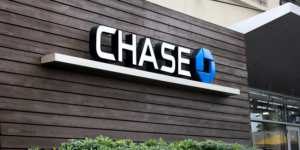
Signing the back of your credit card is an important security step for protecting your card’s information as well as your own personal information if it should fall into criminal hands.
Merchants are supposed to check that the signature on the card matches the signature on the sales receipt as a security measure. If the card has no signature on the back, they can’t process the payment.
Should You Sign the Back of Your Credit Card?
It’s always better to sign the back of your credit card, without exception. This is intended to be an additional step by your credit card company to try and keep your personal information as safe as possible. When used in tandem with the card verification value (CVV) on your card, it can create a line of defense that could protect you from fraudulent charges.
Although the signature itself doesn’t protect you from any frauds, it at least allows the salesman to match it to your existing official signatures to confirm your identity. Generally, this will be done most commonly with your driver’s license, or if you are travelling, your passport will be used. At the end of the day, taking a bit of time to sign the small strip on the back of your card can be the difference between your identity getting stolen or not.
Here’s a look at how the major credit payment networks handle unsigned cards:
Mastercard
Mastercard highly recommends that merchants in its payment network not to accept charges from customers with unsigned credit cards. On the back of every Mastercard, there is a text that even states “not valid unless signed”.
The company has this restriction to instill in merchants that they should not process customer transactions unless the customer’s signature appears in the signature space on the back of the card. If the card has no signature, the merchants are required to request the customer sign the card. A merchant also will need to see a confirming form of identification.
Visa
At Visa, merchants that are in the payment network must verify that the signature on the back of any card matches the customer’s signature on the transaction receipt and any identification. They want to know if you are who you say you are and recreation the same signature on demand when you sign for a credit card transaction is one way to do it.
If your credit card is unsigned, then Visa will consider it as invalid. The words “Not Valid Without Signature” appear above, below or beside the signature panel on all Visa cards. Turn over the card and you’ll see it. And like Mastercard, Visa urges merchants not to accept unsigned credit cards.
When a customer presents an unsigned Visa card to a merchant for payment, Visa requires a merchant to check the customer’s identification by requesting a government-issued form of ID.
Where permissible by state law, the Visa merchant may also write the customer’s ID serial number and expiration date on the sales receipt. (Beginning in California in 1971, the recording of personal information during credit card transactions has become illegal, with the passage of the Song-Beverly Credit Card Act.)
Additionally, Visa also instructs merchants to ask the customer to sign the card, within full view of the merchant. Then, they will check if that signature matches the one they have on their ID. If a customer refuses to sign a Visa card, the card is considered invalid and cannot be processed. Merchants will then be forced to ask the customer for another form of payment.
Discover
With Discover, it is quite simple, the company urges its cardholders to sign the backs of their Discover cards as soon as they get them and activate them. This is due to the signature making the card valid and a cashier may decline the transaction if the card is not signed.
American Express
American Express urges retailers to compare a customer’s signature that is on the back of their American Express card with the transaction sales receipt. If the customer has no signature on their American Express card, they must sign it while the clerk is holding onto the customer’s photo ID.
Writing See ID On a Credit Card
Although writing “see ID” or “check ID” on a credit card might seem like a great way to protect from fraud, it may actually invalidate the card. This is because only your valid signature that a merchant can match with a signature on a sales receipt is acceptable.
In some cases, the merchant may ask you for another car to make your purchase. To save yourself from any problems regarding your transaction, sign your credit card instead.
Tips for Protecting Against Credit Card Fraud
Only carry the credit cards you need. When you travel, keep a list of the credit cards that you have with you. Make note of their full account numbers and expiration dates, as well as contact numbers for the issuers. It will come in handy if something should happen to your wallet, phone or both when traveling.
Go paperless and start checking your credit card statements online to avoid having to keep and shred your paper statements. Just be sure to keep your online passwords in a safe place and to update them from time to time.
Check your credit card transactions each month to check for errors or suspicious activity. Quickly report any transaction you don’t recognize to your card issuer.
 |
 |
Bottom Line
Signing the back of your credit card is a simple security measure that takes little to no time at all. It allows the merchant to verify your identity as well as prevent any criminals from stealing your card and making fraudulent charges on it.
Finally, for those who simply write “see ID” or “check ID” on their card, this may cause some issues when you try to make a purchase because the merchant must have a signature to compare the sales receipt to. For more posts like this, check out our list of bank guides!




Leave a Reply